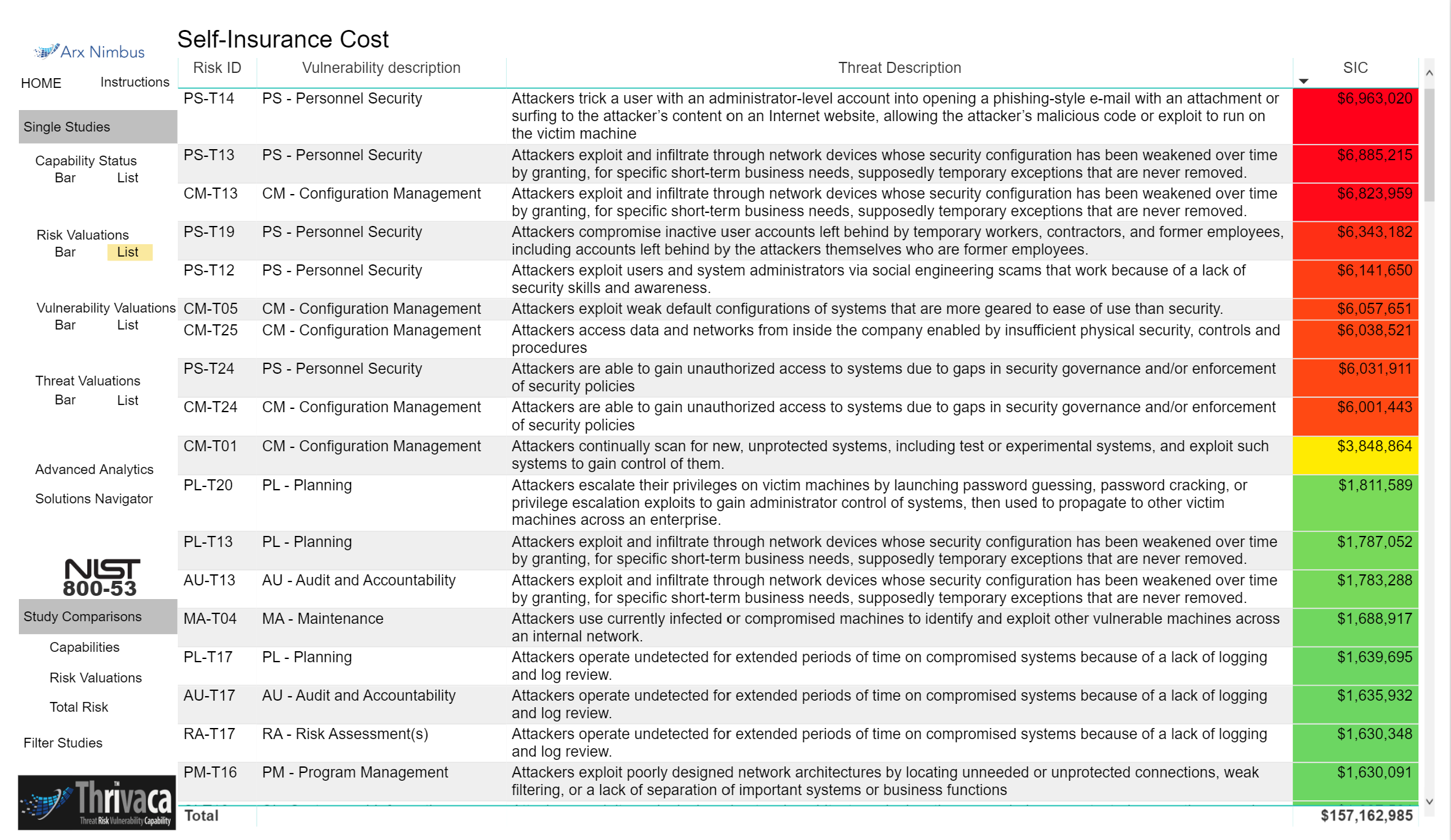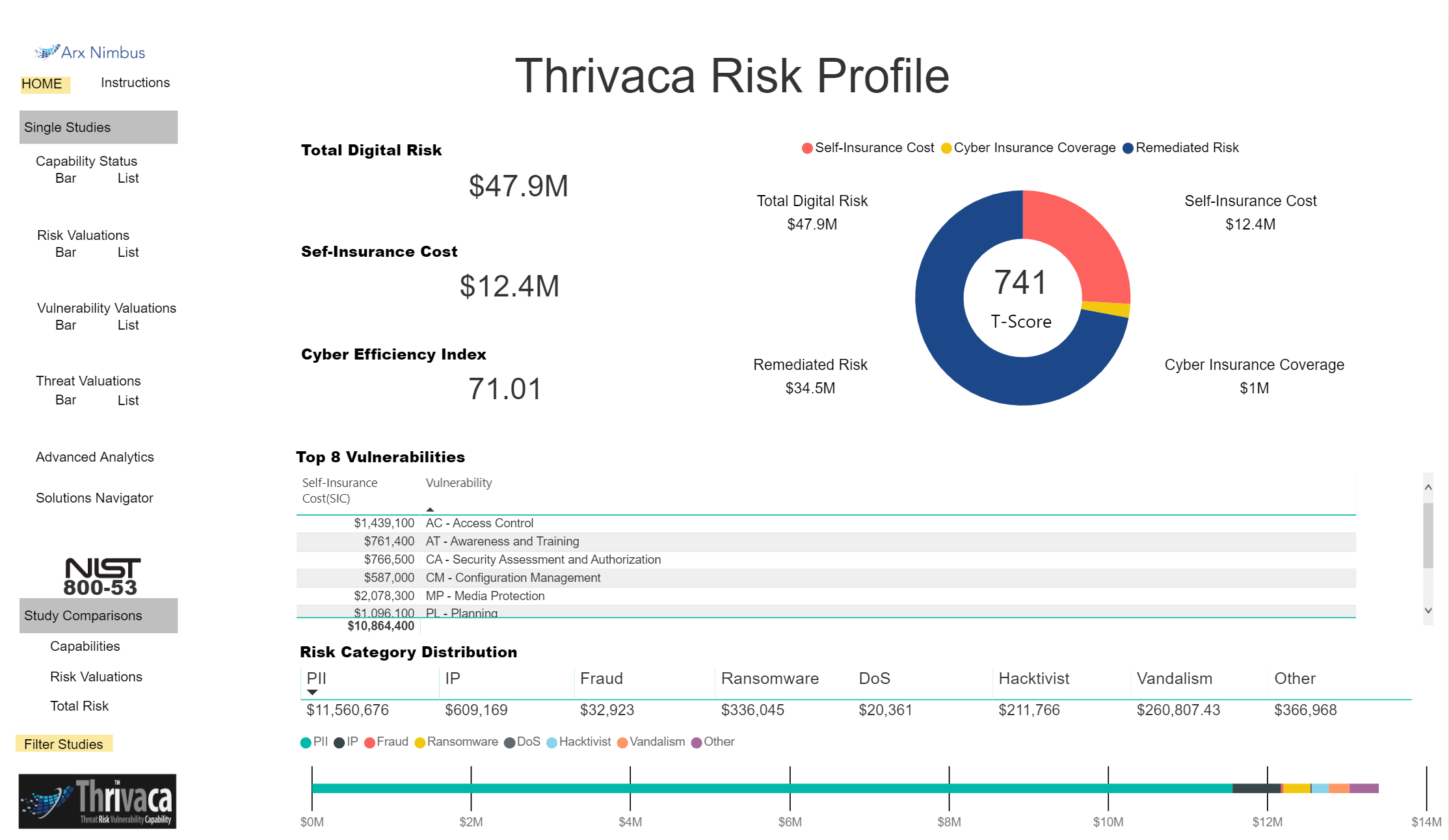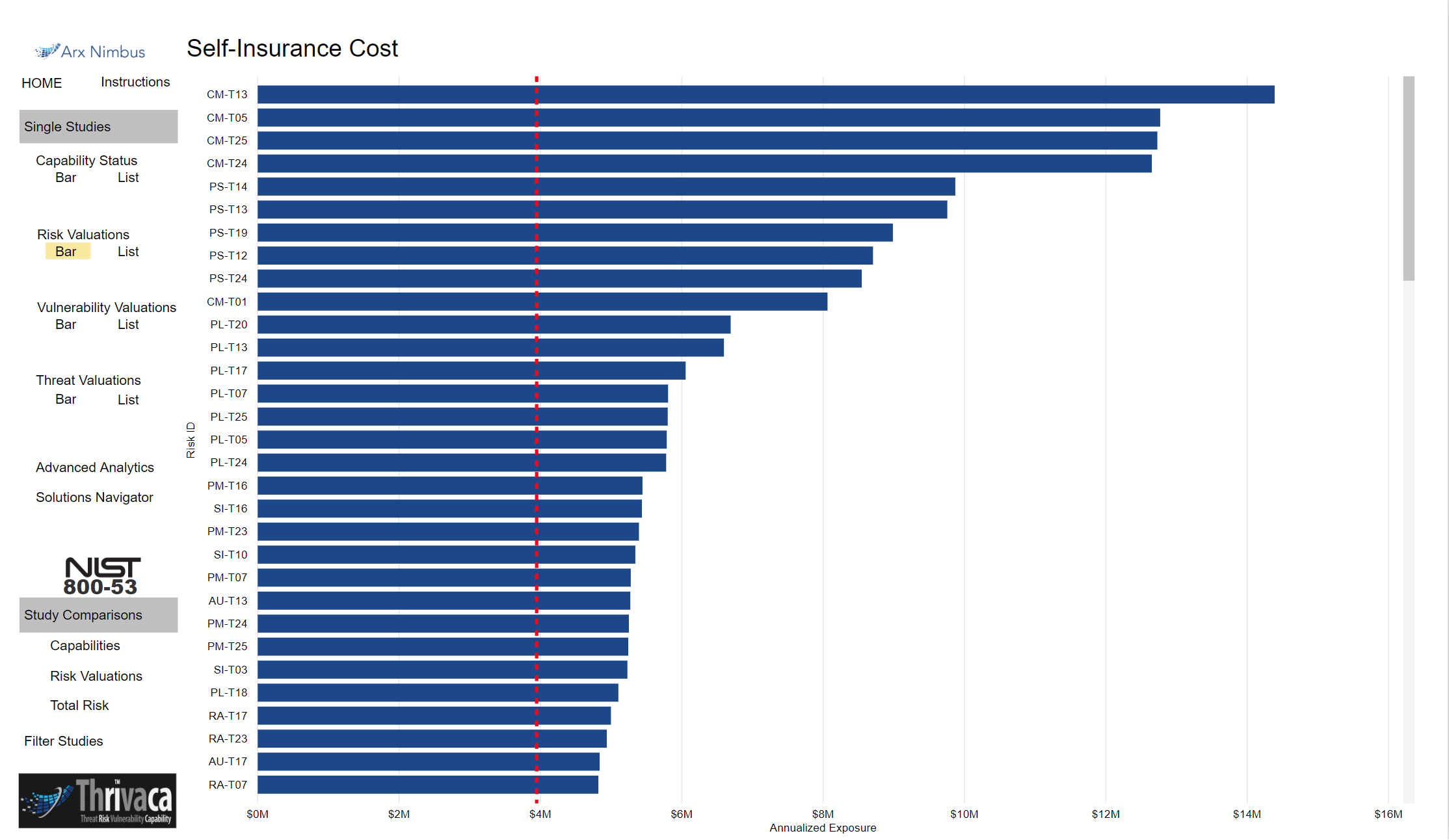and the self-insurance costs that are currently accruing from these top risks. Now when we are presented with a policy, we can evaluate the terms in reference to the exclusions and levels of coverage to choose the right policy. Three additional dimensions of this particular use case that we often see companies missed before Thrivaca are that:
a.) We can now use Thrivaca to target the precise types, areas and levels of coverage needed
b.) we can use Thrivaca to adjust coverage over time as capabilities and risk exposure shifts and changes
c.) We now have the documentation that properly illustrates the mitigation efforts and risk effects in our cybersecurity program, to allow the company to claim a preferred rate based on reduced actual risk accompanied by the accepted level of documentation for the insurance provider.



